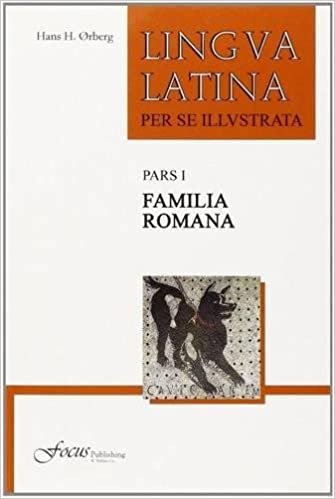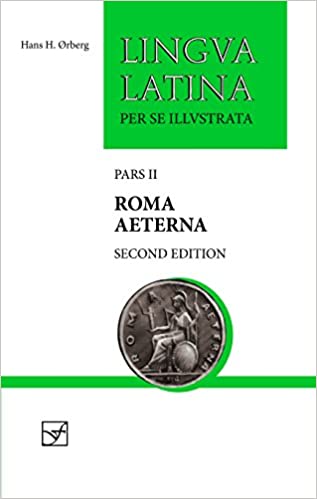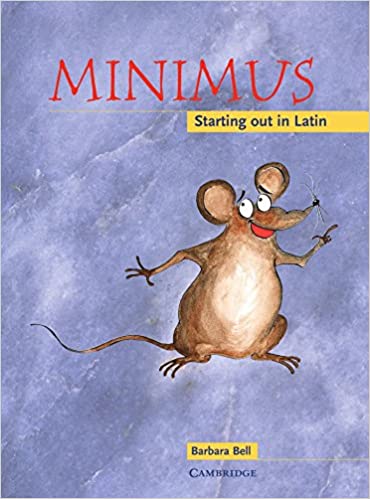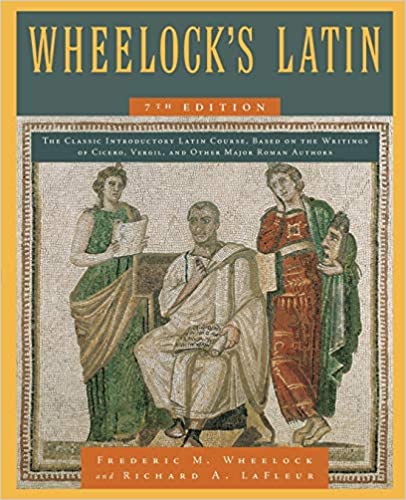Lingua Latina per se Illustrata, Pars I: Familia Romana (Latin Edition)
Hans Ørberg's Lingua Latina per se Illustrata is the world's premiere series for learning Latin via the Natural Method. The Natural Method encourages students to learn Latin without resorting to translation, but instead by teaching them to think in the language: students first learn grammar and vocabulary inductively through extended contextual reading and an ingenious system of marginal notes. Lingua Latina per se Illustrata is also the most popular series for those teachers at both the secondary and collegiate levels who wish to develop Latin conversational skills in the classroom.
Familia Romana (the main book of Pars I of the Lingua Latina per se illustrata series) contains thirty-five chapters and describes the life of a Roman family in the 2nd century A.D. It culminates in readings from classical poets and Donatus's Ars Grammatica, the standard Latin school text for a millennium. Each chapter is divided into two or three lessons (lectiones) of a few pages each followed by a grammar section (Grammatica Latina) and three exercises (Pensa). Hans Ørberg's impeccable Latin, humorous stories, and the Peer Lauritzen illustrations, reproduced in full color, make this work a classic. The book also includes a table of declensions, a Roman calendar, and a word index (index vocabulorum).
The Lingua Latina series incorporates the following features:
- The most comprehensive treatment of Latin grammar available in an elementary textbook.
- A vocabulary of almost 1,800 words, reinforced by constant and creatively phrased repetition, vastly expands the potential for later sight reading.
- A complete line of ancillary volumes, exercises, and readers both in print and online.
Roma Aeterna: Second Edition, with Full Color Illustrations (Lingua Latina) (Latin Edition)
Roma Aeterna (the main book of Pars II of the Lingua Latina per se illustrata series) introduces some of the most celebrated authors of Roman antiquity through the lens of Roman literature and mythology. A vivid description of the city's monuments precedes a prose retelling of the first four books of Virgil’s Aeneid, with many of the most famous passages in their original verse form. The selection from Virgil is followed by Book One of Livy's engaging mythical history of Rome's foundation. The prose selections are judiciously chosen and, in the first few chapters, gently adapted to provide students with a text that is authentically Latin and yet not difficult. The unadapted selections, which make up the majority of the text, are taken from Aulus Gellius, Ovid, Nepos, Sallust, and Horace. These annotated selections make Roma Aeterna useful both as the next step after Familia Romana and as a survey of Latin literature in its own right.Roma Aeterna incorporates the following features:
- Latin immersion with vowel lengths marked
- Approximately 3,000 vocabulary words
- Short discussions of grammar and exercises for each chapter
- Selected readings that cover the material in a Roman history course
- Index of Roman rulers and of historical events arranged chronologically
- Now with full-color illustrations
Minimus Pupil’s Book: Starting out in Latin
Wheelock’s Latin, 7th Edition
For nearly sixty years, Wheelock's Latin has remained the optimus liber of beginning Latin textbooks.
When Professor Frederic M. Wheelock's Latin first appeared in 1956, the reviews extolled its thoroughness, organization, and conciseness; one reviewer predicted that the book "might well become the standard text" for introducing students to elementary Latin. Now, nearly six decades later, that prediction has certainly proved accurate.
This new edition of Wheelock's Latin has all of the features, many of them improved and expanded, that have made it the bestselling single-volume beginning Latin textbook:
- 40 chapters with grammatical explanations and readings drawn from the works of Rome's major prose and verse writers;
- Self-tutorial exercises, each with an answer key, for independent study;
- An extensive English–Latin/Latin–English vocabulary section;
- A rich selection of original Latin readings—unlike other Latin textbooks, which contain primarily made-up texts;
- Etymological aids, maps, and dozens of images illustrating aspects of the classical culture and mythology presented in the chapter readings.
Also included are expanded notes on the literary passages, comments on vocabulary, and translation tips; new comprehension and discussion questions; and new authentic classical Latin readings, including Roman graffiti, in every chapter.






